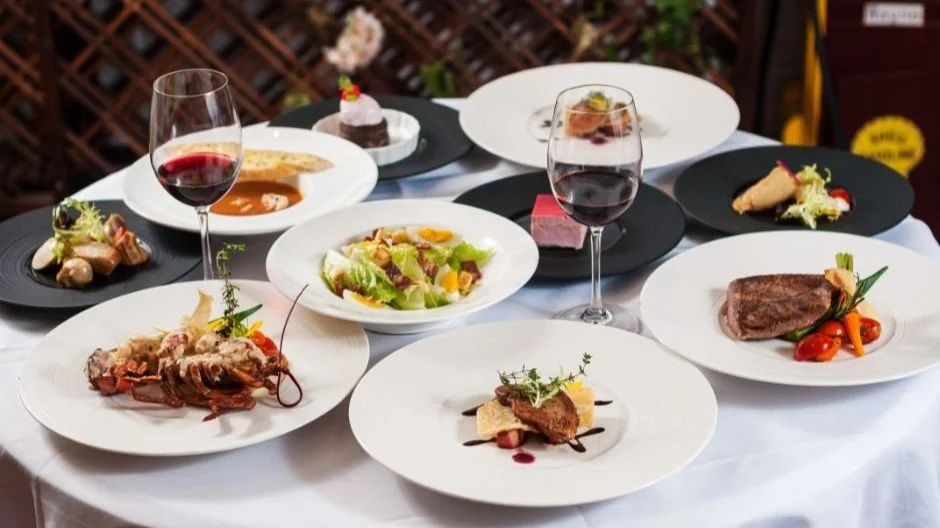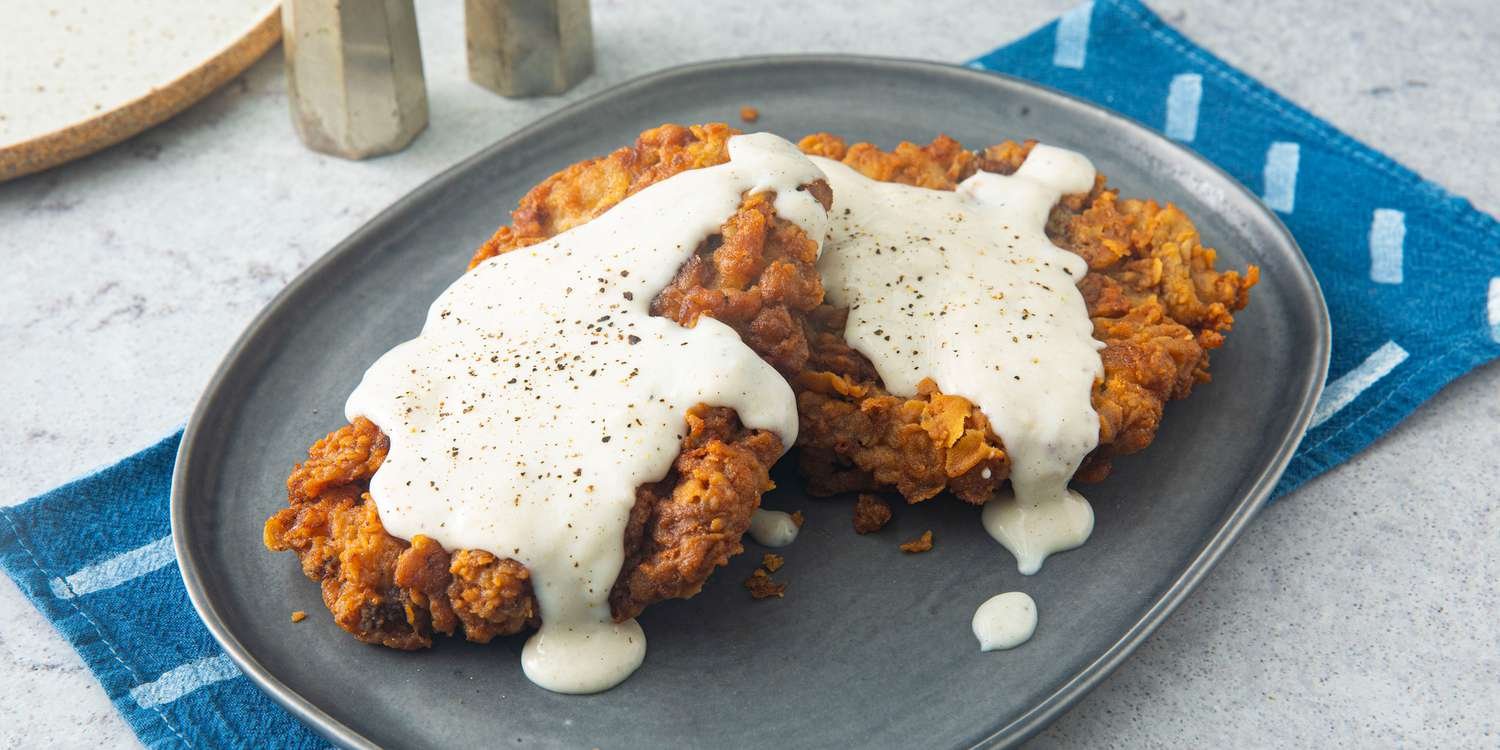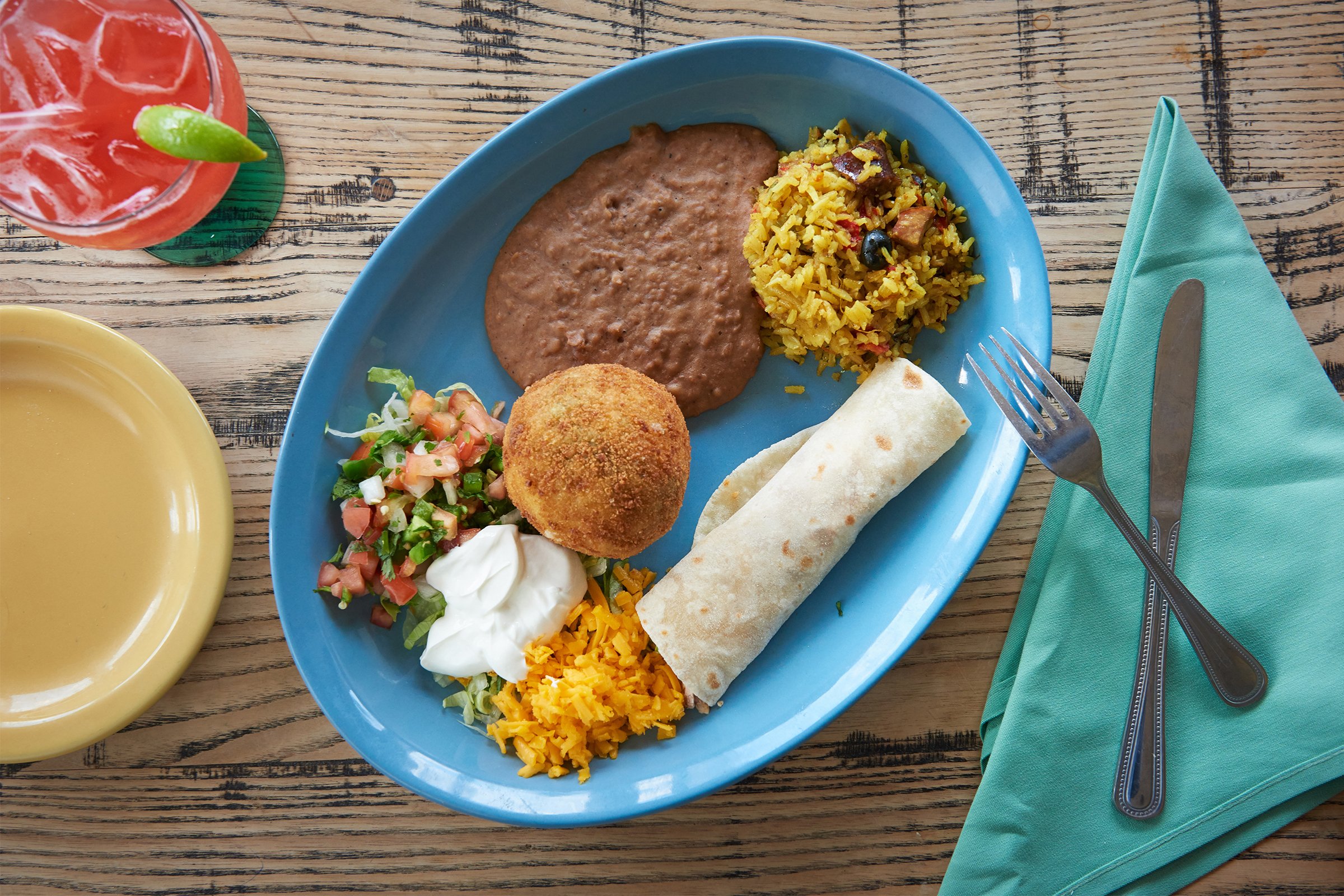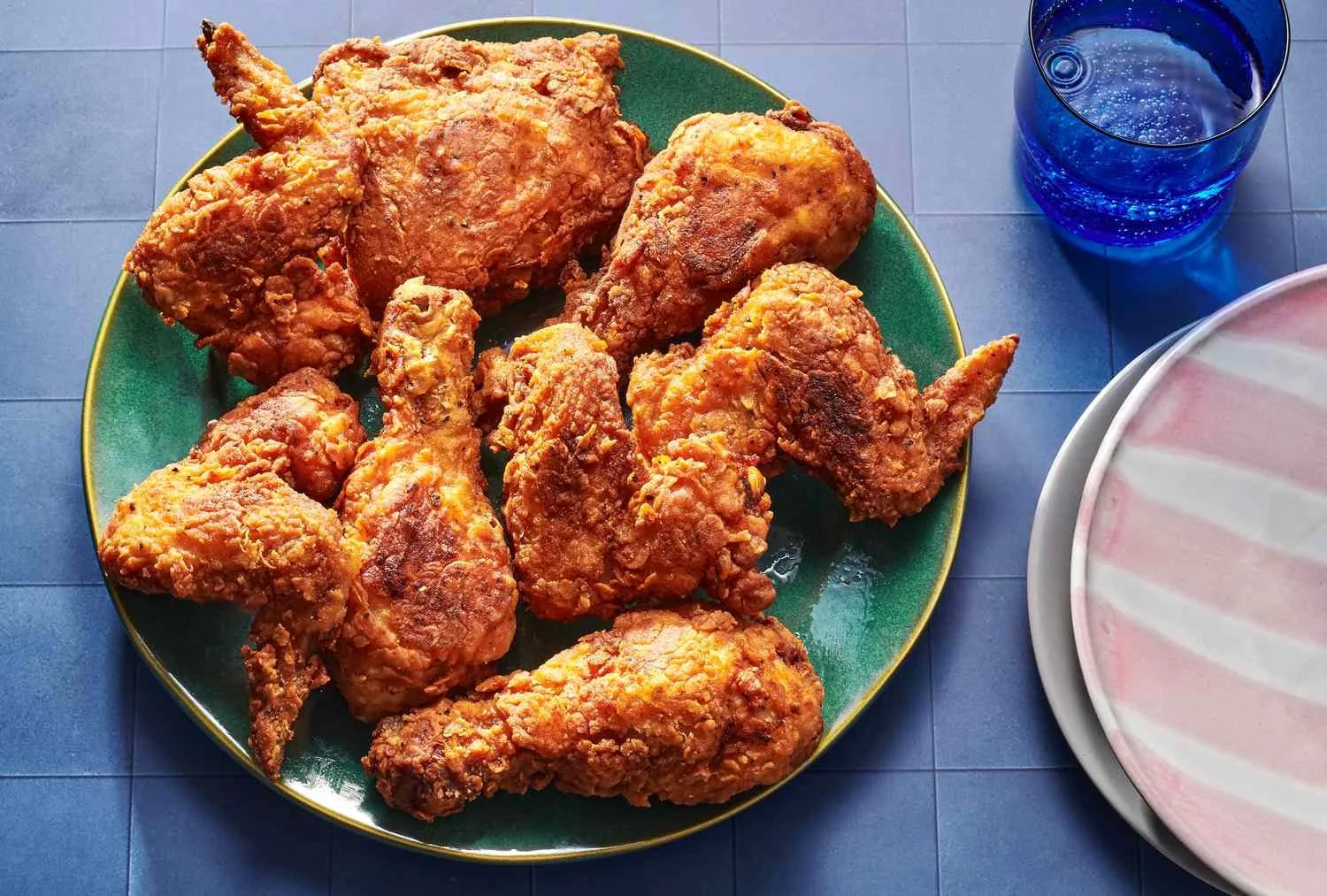Unveiling the Fusion of Flavors in Texan Cuisine from European Settlers
Discover > Truly Texan > Unveiling the Fusion of Flavors in Texan Cuisine from European Settlers
Texas cuisine is a tapestry woven from the diverse cultural influences that have shaped the Lone Star State's culinary heritage. From the fiery allure of Texas barbecue to the savory delights found in the different regions, the flavors of Texas reflect a fascinating blend of traditions brought by European settlers. Together, let us delve into the captivating story of how European culinary influences fused with Texan ingredients and cooking techniques, giving birth to a remarkable gastronomic fusion that defines the rich tapestry of Texan cuisine today.
In every corner of Texas, the impact of European settlers on the local cuisine is unmistakable. In East Texas, where German and Czech immigrants settled, their culinary traditions are prevalent, with mouthwatering sausages and flavorful kolaches becoming staples of the region. San Antonio, known for its vibrant Tex-Mex cuisine, showcases a delicious blend of Spanish, Mexican, and German influences, seen in dishes like enchiladas, tamales, and strudels. South Texas, bordering Mexico, embraces a Tex-Mex fusion that marries Mexican spices and techniques with Texan ingredients, resulting in iconic dishes such as chili con carne and sizzling fajitas. In West Texas, where cowboy culture thrives, the Anglo-American settlers' influence shines through in dishes like hearty chicken-fried steak and comforting biscuits and gravy. And in Central Texas, the barbecue capital, European techniques merged with local ingredients to create mouthwatering smoked meats (What wine goes well with smoked meats?) that have become legendary. This exploration uncovers the intricate web of European influences that have converged with Texan cuisine, resulting in a captivating fusion of flavors that is uniquely Texan.
BBQ’s are quite popular in San Antonio, for best dining experience, check out the list here.
Unraveling Texas Cuisine Influences
Unraveling the influences that have shaped Texas cuisine is like embarking on a culinary adventure through time and cultural exchange. From the European settlers who made their way to the vast lands of Texas to the indigenous flavors and ingredients that were already abundant, the fusion of influences is evident in the diverse array of dishes found throughout the state. Exploring Texas cuisine reveals a tapestry of flavors that reflect the European heritage brought by immigrants from various countries. As we dive into this gastronomic exploration, we will discover the fascinating interplay between European influences and Texan ingredients, resulting in a vibrant list of iconic dishes that have become synonymous with Texan cuisine.
Chicken-Fried Steak
Chicken-fried steak is a true Texas classic that embodies the state's culinary heritage. This beloved dish owes its roots to European settlers who introduced the tradition of breading and frying meat cutlets, a technique that eventually found its way into Southern cuisine. The preparation involves tenderizing a beef cutlet, usually from the round or sirloin, dipping it in a seasoned flour (how long does flour last?) or batter, and frying it until golden brown. The result is a crispy and flavorful exterior that encases a juicy and tender piece of meat.
One of the distinguishing features of chicken-fried steak is its luscious cream gravy, which further enhances the dish's indulgence. This creamy and savory gravy, often made with a roux of flour and fat, is poured generously over the fried steak, adding richness and depth of flavor. The combination of the crispy meat and velvety gravy creates a delightful contrast of textures and a harmonious balance of flavors.
Chicken-fried steak has become a staple in Southern cuisine and is an iconic representation of Texan food. It can be found throughout Texas, from small-town family-owned diners to renowned restaurants in bustling cities like San Antonio. This delectable dish is often served alongside classic Southern sides like mashed potatoes, green beans, or cornbread. Its popularity and availability across the state speak to its cherished status in Texan culinary culture. Whether enjoyed as a hearty breakfast, a satisfying lunch, or a comforting dinner, chicken-fried steak remains a timeless and beloved part of Texan cuisine.
Tex-Mex Cuisine
Tex-Mex cuisine is a vibrant and flavorful culinary fusion that showcases the cross-cultural influences between Mexican and American flavors. While its roots lie in the Mexican heritage of Texas, the origins of Tex-Mex can be traced back to the European settlers who brought their own culinary traditions to the region. The Spanish and German immigrants played a significant role in shaping the foundation of Tex-Mex cuisine.
The Spanish influence in Tex-Mex cuisine is evident in the introduction of various ingredients and cooking techniques. Spanish settlers brought ingredients like tomatoes, onions, garlic, and olive oil, which are now fundamental elements in many Tex-Mex dishes. The Spanish also introduced the concept of using spices, such as cumin and oregano, to flavor the dishes. Additionally, the use of wheat flour tortillas, which differ from the traditional corn tortillas (how long do corn tortillas last?), can be attributed to the Spanish influence.
The German immigrants, with their culinary traditions, also left an indelible mark on Tex-Mex cuisine. They introduced the use of meat, particularly beef, in Texan cooking, which resulted in the popularization of dishes like carne guisada (stewed beef) and beef fajitas (What wine goes well with beef fajitas?). German spices and seasonings, such as paprika and sauerkraut (how long does sauerkraut last?), found their way into Tex-Mex cuisine, adding a unique twist to traditional Mexican flavors.
Tex-Mex dishes like enchiladas, tacos, and tamales perfectly embody the fusion of Mexican and European influences. Enchiladas, for example, feature corn tortillas filled with a variety of ingredients, rolled up and smothered in chili sauce. The use of chili powder and the cooking technique of baking the filled tortillas can be traced back to European culinary traditions.
Tacos, a staple in Tex-Mex cuisine, showcase the fusion of Mexican flavors and European ingredients. The concept of using tortillas as a vessel for fillings was introduced by Mexican indigenous communities, but the European settlers enhanced the variety of fillings and brought in European ingredients like cheese, beef, and spices.
Tamales, a traditional Mexican dish, were adapted by Tex-Mex cuisine to incorporate European techniques and ingredients. The use of lard in the masa dough and the addition of savory fillings like meat and cheese showcase the interplay of culinary influences.
Chili con Carne
Chili con carne, recognized as the official state dish of Texas, is a culinary masterpiece that embodies a fusion of Spanish, Mexican, and European influences. While the dish's roots can be traced back to Spanish and Mexican cuisines, it owes much of its character and flavor to the contributions of European settlers, particularly the German and Czech immigrants in the Texas Hill Country.
The German and Czech immigrants brought with them a love for hearty stews and a penchant for using meat as a prominent ingredient. This influence is evident in Texas-style chili, which features generous amounts of beef or other meats as the base. The European settlers introduced a variety of meats, including beef, pork, and sausage, into the dish, creating a rich and robust flavor profile.
Additionally, the European settlers brought their own unique blend of spices, which became integral to Texas-style chili. The use of spices like cumin, oregano, paprika, and chili powder adds depth and complexity to the dish. These spices, combined with the slow cooking methods characteristic of European stews, result in a chili that is rich in flavor and texture.
The Texas-style chili's cooking process, which involves long hours of simmering, can also be attributed to the European settlers. The slow cooking method allows the flavors to meld together, resulting in a dish that is both tender and bursting with savory goodness. This technique reflects the European tradition of slow-cooked stews, where patience and time are crucial for achieving optimal flavor and tenderness.
While chili con carne has Spanish and Mexican origins, the influence of European settlers, particularly the German and Czech immigrants, is undeniable. Their love for hearty stews, the incorporation of various types of meat, the use of spices, and the slow cooking methods have shaped the Texas-style chili into the beloved dish it is today. Whether enjoyed as a comforting bowl of chili or used as a flavorful topping for hot dogs or burgers, Texas-style chili represents the diverse culinary heritage that defines Texan cuisine.
Texas Barbecue
The rich and flavorful barbecue culture that thrives in Texas, especially in the renowned Texas Barbecue Belt, can be traced back to its deep European roots. The influence of German and Czech immigrants played a pivotal role in shaping the unique and distinctive style of Texas barbecue that is celebrated today.
German and Czech immigrants brought with them a wealth of knowledge and expertise in smoking and curing meats, which laid the foundation for the Texas barbecue tradition. These immigrants settled in central Texas, particularly in the areas known as the Texas Barbecue Belt, where they brought their culinary techniques and traditions from the Old World.
The smoking and curing techniques introduced by these European settlers became integral to the evolution of Texas barbecue. Slow-cooked, smoked meats became the centerpiece of Texas barbecue, with cuts like brisket, sausage, and ribs taking center stage. The German influence can be seen in the emphasis on smoked sausages, such as the popular Czech-inspired "Texas hot gut" sausage, which showcases the melding of European and Texan flavors.
The European settlers in Texas embraced the locally available ingredients and adapted their smoking and curing techniques to the new environment. They utilized the abundance of hardwoods like oak and mesquite for smoking, imparting a distinct and robust flavor to the meats. The process of slow-cooking over indirect heat for extended periods allowed the meats to become tender, juicy, and infused with a smoky essence.
Over time, the techniques and flavors brought by German and Czech immigrants merged with the local culinary traditions and ingredients, giving rise to the unique Texas barbecue style. This fusion of European smoking and curing methods with Texan ingredients and cooking techniques has become synonymous with Texas barbecue and has garnered worldwide acclaim.
Texas is widely known to have delicious cuisine, and Beef Brisket (What wine goes well with beef brisket?) is deemed its national dish. To learn more about Beef Brisket, click here. We've curated a list of 22 standout barbecued brisket restaurants for you.
Fried Chicken
The irresistible tradition of Southern fried chicken has left an indelible imprint on Texan cuisine, courtesy of the European settlers who brought their time-honored frying techniques to the region. This culinary fusion seamlessly blended into the vibrant traditions of both Southern and Texan cooking, resulting in the beloved dish we know today. Fried chicken has become synonymous with comfort food in Texas, winning the hearts and palates of locals and visitors alike.
The European settlers introduced their cherished methods of frying chicken, which involved coating the meat in a seasoned flour or batter before deep-frying it to golden perfection. This technique created a magical transformation, producing chicken with a delectable crispy exterior while maintaining its succulent and juicy interior. The European influence in this process is evident in the use of breading and frying methods that were prevalent in their own culinary traditions.
Today, fried chicken has become a culinary staple in Texas, enjoyed across the state in various dining settings. From quaint and cozy family-owned eateries serving up homestyle favorites to upscale establishments adding their own gourmet touch, fried chicken has found its place on menus throughout Texas. Whether accompanied by classic sides like mashed potatoes and collard greens or offered in creative and innovative presentations, fried chicken continues to captivate taste buds and evoke feelings of comfort and satisfaction.
Biscuits and Gravy
Biscuits and gravy, a beloved and comforting breakfast dish, traces its origins back to the European settlers who brought their culinary traditions to the United States. The concept of serving savory meat-based gravies over freshly baked biscuits became a mainstay in Southern and Texan cooking.
The European settlers, particularly from countries like England and Scotland, had a long-standing tradition of incorporating meat-based gravies into their cuisine. Upon arriving in the United States, they adapted their recipes to the available ingredients and local culinary practices. The result was a delectable combination of flavors and textures that became known as biscuits and gravy.
The dish typically consists of warm, fluffy biscuits served alongside a rich and savory meat-based gravy. The biscuits, known for their tender and flaky texture, are made with simple ingredients like flour, butter, and buttermilk. They are baked to perfection, providing a warm and comforting base for the flavorful gravy.
The gravy, made by combining meat drippings, such as sausage or bacon, with flour, milk, and seasonings, adds a savory and creamy component to the dish. The European settlers' influence is evident in the use of meat-based gravies, a technique that has been passed down through generations and remains an integral part of biscuits and gravy.
In Texas, biscuits and gravy can be found throughout the state, from cozy diners to trendy brunch spots. It has become a staple on breakfast menus, satisfying both locals and visitors with its hearty and comforting qualities. Whether enjoyed as a standalone meal or served alongside eggs, bacon, or other breakfast favorites, biscuits and gravy exudes a sense of homey warmth and nostalgia.
German and Czech Pastries
The influence of German and Czech settlers on the culinary landscape of Texas is unmistakable, particularly when it comes to pastries and baked goods. Their traditions and expertise in baking have left a lasting imprint on Texan cuisine, with a wide array of European-inspired treats that continue to delight locals and visitors alike. One such example is the kolache, a pastry filled with fruit or savory ingredients like sausage. Kolaches have become a beloved staple in Texas, with numerous bakeries and cafés specializing in these delectable treats. The Czech influence is evident in their flaky and buttery dough, while the fillings reflect the diverse flavors and preferences of Texan palates.
In addition to kolaches, the German influence can be seen in the popularity of strudels with sweet fillings. These delicate pastries, typically made with a thin and flaky dough, are filled with a variety of ingredients such as apples, cherries, or even cheese. The German settlers brought with them their expertise in pastry making, and today, Texan bakeries showcase their own interpretations of these delightful treats. Whether enjoyed as a breakfast pastry or as a dessert, strudels offer a delightful combination of flavors and textures that have become a cherished part of Texas' culinary tapestry.
European Sausages
The influence of German and Czech immigrants on Texan cuisine extends beyond pastries and baked goods to the realm of sausages. These European settlers brought their rich sausage-making traditions to Texas, leaving a lasting mark on the state's culinary landscape. The result is a wide variety of sausages that have become integral to Texan cuisine, beloved by locals and sought after by food enthusiasts.
Bratwurst, a traditional German sausage made from pork, is a staple in Texan cuisine. Its flavorful combination of herbs and spices, along with its characteristic smoky and juicy texture, has made it a popular choice for grilling or smoking. Kielbasa, a Polish sausage known for its robust flavor, is also widely enjoyed in Texas. These sausages, along with other smoked and grilled varieties, have found their way onto menus across the state, ranging from small-town barbecue joints to upscale urban restaurants.
Pan or Brown Gravy
Pan or brown gravy is a culinary influence brought by European settlers that have become an integral part of Texan cuisine. This technique of creating rich and savory gravies from pan drippings can be traced back to the cooking traditions of Europe and has found a prominent place in Texan culinary practices.
The process of making pan or brown gravy involves deglazing the pan used to cook meats, such as steaks or roasts, and incorporating the flavorful drippings into a thickened sauce. The pan drippings, along with additional ingredients like flour, butter, and seasonings, are carefully combined to create a velvety, savory gravy that complements a variety of dishes. The European settlers brought their expertise in this art of gravy-making to Texas, and it has since become a cherished tradition in Texan kitchens.
Pan or brown gravy is commonly served alongside meats and potatoes, providing a luscious and flavorful accompaniment to these hearty dishes. Whether it's a succulent steak, a roasted chicken, or a comforting plate of mashed potatoes, the addition of pan or brown gravy elevates the flavors and adds a touch of richness. This technique highlights the resourcefulness and culinary ingenuity of European settlers, who found ways to maximize the flavors of their meals by utilizing pan drippings to create a delightful sauce.
Cornmeal Battered Fried Fish
Cornmeal (how long does cornmeal last?) battered fried fish is a beloved dish that captures the essence of Texan culinary traditions. This mouthwatering preparation brings together the best of both worlds, combining the rustic charm of cornmeal coating with the delicate and flaky texture of fresh fish. The technique of battering fish in cornmeal can be traced back to the European settlers who introduced their time-honored methods of breading and frying to Texas.
The use of cornmeal in the batter adds a distinctive touch to the fried fish. Cornmeal brings a slightly sweet and nutty flavor, complementing the natural flavors of the fish. It also creates a delightful crunch when fried, adding an irresistible texture to each bite. Whether it's catfish, trout, or other locally sourced fish, cornmeal battered fried fish has become a staple in seafood restaurants and coastal regions throughout Texas.
This delectable dish showcases the state's love for seafood and highlights the fusion of European and Texan culinary influences. It is a testament to the versatility and creativity of Texan cuisine, where the traditional European method of breading and frying has been adapted and perfected to suit local tastes and ingredients. Served with a side of tangy tartar sauce or zesty remoulade, cornmeal battered fried fish is a delightful expression of Texas' culinary heritage, enjoyed by locals and visitors who crave the flavors of the Gulf Coast.
Mexican Restaurants
Texan cuisine is a captivating fusion of European and Mexican flavors, forming a culinary tapestry that represents the true essence of Texas food. Mexican restaurants have become a defining feature of Texan dining, offering a tantalizing array of dishes such as enchiladas, tacos, and fajitas. The marriage of European influences and traditional Mexican cooking techniques gives birth to a totally Texas dish that embodies the vibrant and bold flavors of the Southwest.
Texan cuisine also celebrates the crispy delight of tortilla chips (how long do tortilla chips last?), served alongside zesty salsas and flavorful dips. The concept of tortilla chips can be traced back to Mexican culinary heritage, but it was the fusion with European influences that elevated it to a beloved Texan staple. The crunch of the chips combined with the vibrant flavors of salsas, guacamole, or queso creates a dynamic and satisfying snacking experience.
Additionally, sizzling fajitas, with their aromatic blend of marinated meats, onions, and peppers, further exemplify the harmonious fusion of European and Mexican flavors. The sizzling platters, reminiscent of European-style grilling, bring together the vibrant spices and traditional ingredients of Mexican cuisine. The result is a tantalizing dish that perfectly captures the spirit of Texan culinary innovation.
A Flavorful Culinary Journey
Texan cuisine stands as a testament to the rich tapestry of culinary influences that have shaped the state's gastronomic identity. From the European settlers who brought their traditional techniques and flavors to the Mexican influences that infuse the vibrant Tex-Mex creations, the fusion of cultures has resulted in a truly unique and diverse culinary landscape. Whether savoring the smoky flavors of Texas barbecue, indulging in the comfort of Southern fried chicken, or exploring the bold and spicy world of Tex-Mex, the flavors of Texas offer a delightful adventure for the taste buds.
So, whether you find yourself in the heart of San Antonio, the rolling hills of the Texas Hill Country, or the bustling cities of Dallas or Houston, embrace the opportunity to dive into the world of Texan cuisine. Seek out the local barbecue joints, try the beloved chicken-fried steak, or venture into a lively Tex-Mex eatery. Let your taste buds be your guide as you savor the culinary crossroads where European settlers and Mexican flavors converge, unveiling the captivating fusion that defines the flavors of Texas.
So, grab your fork, ignite your appetite, and embark on a flavorful journey through the melting pot of Texan cuisine. Discover the culinary wonders that have evolved from the influences of European settlers and Mexican traditions. From the sizzling barbecue pits to the vibrant Tex-Mex feasts, let your taste buds be transported to a world of bold flavors and delightful fusions. Texas cuisine invites you to indulge in its diverse and mouthwatering offerings, leaving you with a truly unforgettable culinary experience. Don't miss out on the chance to unravel the fusion of flavors that make Texan food a true delight.













